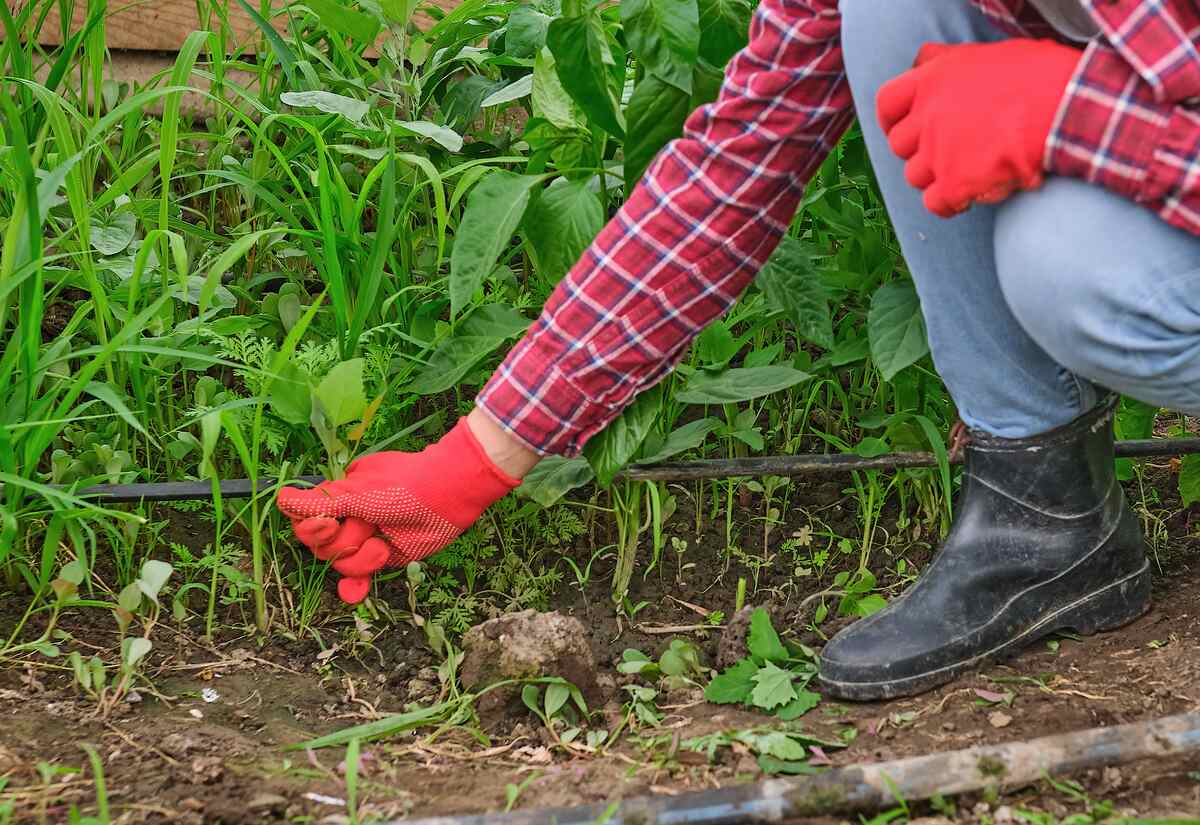
There’s more than one way to get rid of weeds in grass. You can pull them out, apply post-emergent herbicides or natural weed killers, smother, or even overseed your lawn heavily.
If you don’t know which weeds you have or how to kill them, hiring a professional is also a good alternative. Regardless of your chosen method, understanding how each method works can bring you one step closer to winning the battle against the stubborn weeds in your lawn.
| Project Difficulty: Beginner to expert, depending on the method used and the extent of the weed infestation Estimated Time to Complete: 1 day (or more for large lawns with a widespread infestation) Project Cost: Post-emergent applications cost between $50 and $95 for lawns between 1/8 and 1/4 acre. For lawns over 1 acre, average costs start at $495. If you’re hand-pulling weeds, thick gloves cost $7 to $13. |
Pull Them Out by Hand
Pulling weeds by hand while they’re still young is great advice because it actually works. With their roots still developing, you have a high chance of eradicating them even before they start to spread.
For this method of killing weeds in grass, you’ll need thick gloves and a screwdriver. Then, follow these steps:
- Using your dominant hand, pick up as much of the weed’s leaves and stem as you can.
- With your other hand, stick the screwdriver near the root area.
- Loosen the dirt by moving the screwdriver around while pulling the weed at the same time.
The key here is to remove the weeds before they take over your lawn. But if you find this manual method tedious, you can call a local lawn treatment pro who knows what kills weeds permanently and safely.
Best For: Broadleaf weeds with shallow roots like chickweed, clover, and purslane. When getting rid of dandelions, it’s best to hand-pull before they develop a deep taproot. Best for getting rid of a few weeds here and there, not a lawn full of them.
Pro Tip: Use a weed puller to remove weeds without exerting much effort. This gardening tool uses leverage and gripping mechanisms to help pull the weeds, including their roots, from the ground. Some models even allow you to pull weeds without bending down or getting on your hands and knees.
Apply Post-Emergent Herbicides
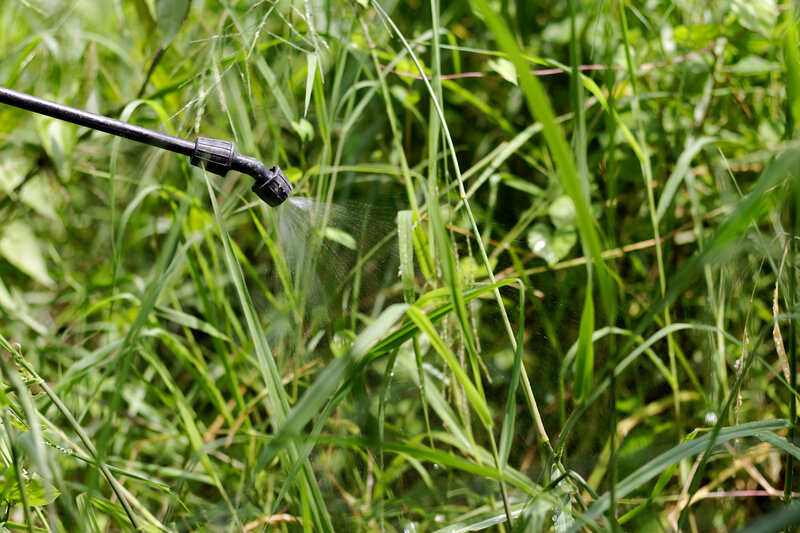
Another option for eliminating the weeds that have sprouted in your lawn is to apply post-emergent herbicides. So, if hand-pulling weeds is not your thing or you have more than a few weeds, this approach can help you control weeds without breaking your back.
While several types of post-emergent herbicides are available on the market, selective and non-selective herbicides offer the best options for homeowners who are planning to apply them on their own:
Selective Herbicides
Designed to kill specific species of weeds, selective herbicides won’t harm surrounding plants even if the formula comes into contact with them. It’s the best way to kill weeds for homeowners who are not well-versed in lawn care but want to do the weed killing themselves.
The only prerequisite for this weed control method is that you have to know the type of weed you’re targeting (and your type of grass, too) beforehand so you can purchase the right herbicide. The drawback, though, is selective herbicides are more expensive than non-selective herbicides and may require several applications.
Best For: Sedges, grassy weeds (i.e., crabgrass), and broadleaf weeds like oxalis and wild violet
Non-Selective Herbicides
If you have a diverse range of weed species to deal with, a non-selective post-emergent is the better choice. It’s more potent and will kill everything in its path, including turfgrass, flowers, and other plants it comes into contact with.
I recommend a non-selective herbicide if you want to remove weeds from gravel, driveways, or sidewalks. Also, if you’re planning to clear out your lawn for reseeding, non-selective is the way to go.
Best For: Annual weeds like foxtail and spurge; perennial weeds like bull thistle and poison ivy.
Try Natural Weed Killers
If you’re not comfortable using synthetic herbicides, you can use natural weed killers as an alternative. While you won’t have to worry about environmental contamination in case of runoff, these weed killers can still harm your turfgrass (or you) if not properly applied. Like the chemical option above, the following natural weed killers are non-selective.
Boiling Water
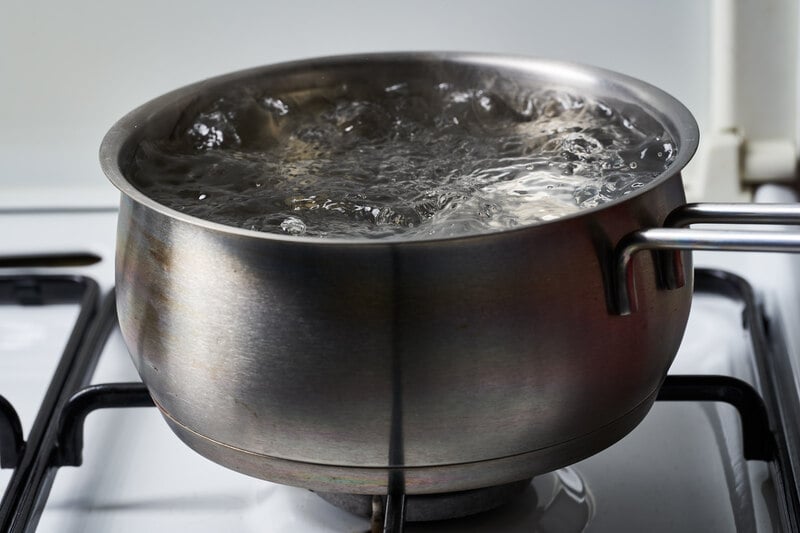
For this DIY weed killer, all you need is a stove, a kettle, and water. This method is especially effective when the weeds are still young and is a popular option for weeds located in the cracks of driveways and patios. You just have to pour boiling water directly onto the weeds, taking care not to burn yourself or surrounding plants.
Best For: Spurge, moss, oxalis, and annual weeds with shallow roots like foxtail and lambsquarters.
Vinegar
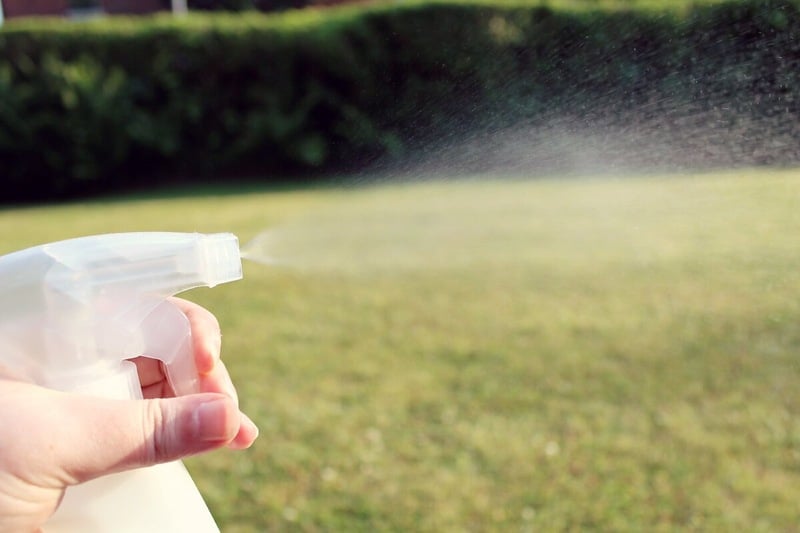
Most people who prefer the organic way of killing weeds in grass would recommend the most common DIY weed killer: household vinegar. While you can definitely spray it directly on the weeds, you can increase its effectiveness by combining it with other household items — dish soap and salt. You’ll need the following ingredients:
- 1 gallon of white vinegar
- 2 tablespoons dish soap
- 1 cup salt
Mix them together in a large bucket, then transfer an appropriate amount to a spray bottle. Now, all you have to do is spray the vinegar solution directly on the weeds. Keep in mind that this is similar to a non-selective herbicide, so take extra care not to let it drift onto the surrounding plants, or they’ll be harmed, too.
Best For: Algae, moss, and annual broadleaf weeds like chickweed, purslane, and spurge. For grassy weeds like crabgrass and goosegrass, vinegar works best before they establish deep roots.
See Related:
Weed Torch
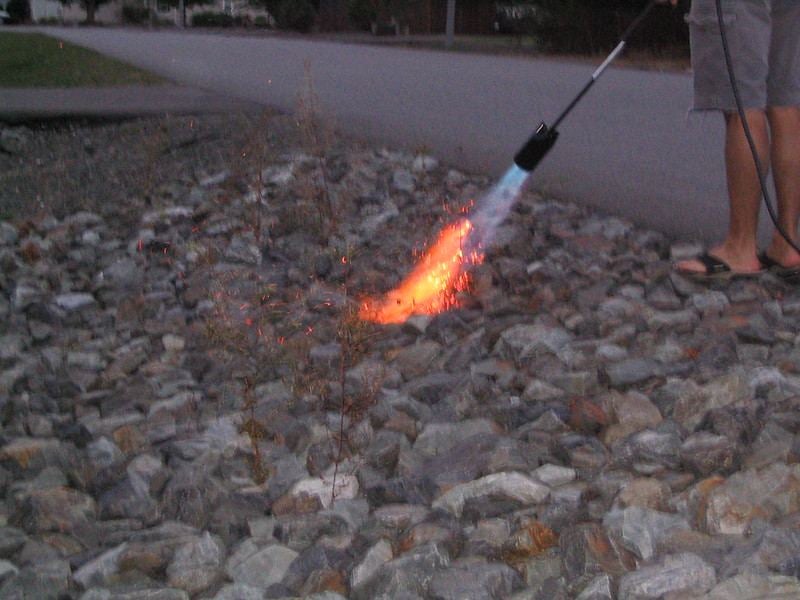
Another natural weeding technique is the weed torch — a blowtorch specifically made for weeds. The intense heat from the flame causes plant cells to burst, after which the plant will wilt and die. It’s an effective solution for small perennials and annual weeds.
Just like the previous two approaches, a weed torch is also non-selective, so you need to take extra care not to damage the surrounding grass as you burn the weeds.
Safety Note: Using a weed torch can create a fire hazard in your landscape, so do not use it in areas with burn bans. Also, thermal weeding should be avoided in regions at risk for wildfires and during the dry season.
Best For: Annual weeds like chickweed, foxtail, mallow, and spurge
Rubbing Alcohol
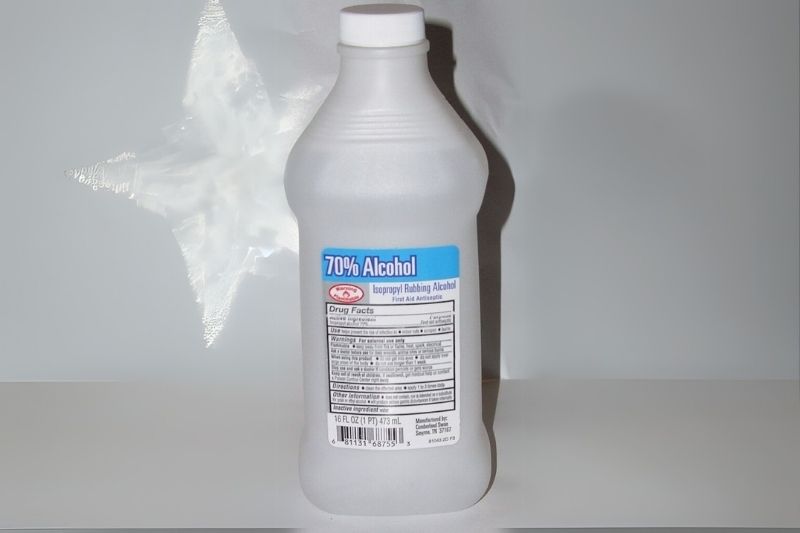
Spraying rubbing alcohol directly on the leaves of weeds can help suck out moisture and dehydrate them. Since alcohol binds well with water, it can desiccate the weeds as it evaporates.
You’ll need to dilute the rubbing alcohol to use it effectively. Here are the ingredients you’ll need:
- 1 quart of water
- 2 tablespoons of isopropyl alcohol
- A few drops of liquid soap
The soap will act as a surfactant, helping the solution to be absorbed by the plant’s leaves more easily. On a warm, sunny day, drench the weeds with the solution to dry them out, taking extra care not to spray on surrounding plants accidentally.
Best For: Broadleaf weeds like lamb’s quarters and pigweed; weeds in pavement cracks like plantain and oxalis
Smother Them
As you already know, sunlight is vital for the germination process of every seed, so blocking out the sun is an effective way to prevent weed seeds from germinating. Fortunately, smothering weeds is quite easy because the process can be part of your routine lawn care maintenance.
Here are some of the ways you can smother weeds, depending on the situation:
- Killing weeds in grass: Use a mulching mower instead of your usual mower for your regular mowing. This process will leave a layer of mulched grass clippings that can effectively block sunlight and hinder weed growth.
- Clearing an area of weeds: If you’re preparing an area, such as a flower bed, for planting, sheet mulching can kill weeds and add organic matter to the soil. For this approach, you’ll need to cover the area with a landscape fabric, newspaper, or cardboard and add an organic mulch like wood chips on top.
Best For: Perennial weeds like creeping Charlie and wild violet; annual weeds like pigweed and purslane
Overseed Heavy
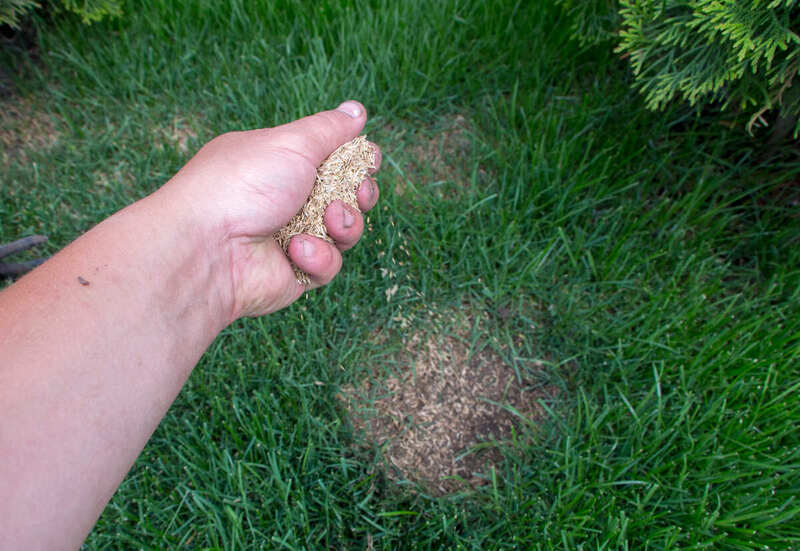
You can prevent weeds from propagating right from the start by overcrowding your lawn so there’ll be no room for them to grow. Take note, though, that overseeding is a way to prevent weeds from returning and not a way to kill existing weeds. It works well after you kill the weeds by hand-pulling or with organic or synthetic herbicides.
Overseeding is a follow-up technique that will help you prevent new weeds in your lawn while making it lush and dense at the same time.
Note: The best grass types to use for heavy overseeding are Bermudagrass for warm-season grass and Kentucky bluegrass for cool-season grass, as they can compete well with weeds.
Hire a Professional
Not everyone knows how to get rid of weeds in grass. If your weed problems are already out of control and can’t be solved by the previous methods, it’s best to hire a professional to do it instead. They not only have the knowledge and experience in handling weeds but also have access to professional-grade products and tools.
Professional weed control costs can vary greatly depending on different factors, but they usually range from $65 to $165 per 1/4 acre. If the area to work on is small, less than 1/8 acre, it usually costs around $35. While you won’t have to shell out a lot if you weed the lawn DIY, the cost of hiring a professional may be worth it if the weed infestation is already out of control.
Best For: All types of weed problems.
How to Choose the Right Weed Control Method
Since so many weed control solutions are available, you must choose the most effective method for your needs. Selecting the best one can be challenging, though, as there are a lot of factors to consider, such as:
- Weed type: Match the control method with the type of weed you’re targeting since weed control solutions are not all the same. For example, hand-pulling is effective for broadleaf weeds with shallow roots, while selective herbicides can work even on weeds with deep roots (as long as you use the right product for that specific weed).
- Timing: To stop weed seeds from sprouting, you’ll need to apply a pre-emergent herbicide. But for weeds already on your lawn, you must use a post-emergent herbicide or any of the other methods in this guide.
- Level of tolerance: Homeowners who aren’t looking for complete weed control may be happy to hand-pull a few weeds every week or so. But those who want to completely eradicate weeds from their lawns may be better off hiring a pro or applying synthetic or organic solutions on a set schedule.
- Treatment area: The ease of access and size of the area to be treated can heavily influence your decision. For example, you can hand-pull weeds if you’re treating a small area. But if you have a large lawn, you may want to use an herbicide or hire a weed control pro for effective weed control.
- Organic vs. synthetic: This factor will largely depend on your preference. For example, you can use an organic weed killer if you’re uncomfortable spraying a chemical herbicide on your lawn.
- Lawn care skill: Be honest with yourself and gauge if you have the skills to control weeds. Mistakes (like applying selective herbicides on the wrong type of weed) will render your weed control efforts ineffective and may also harm your turf.
FAQ About Getting Rid of Weeds in Your Grass
Using pre-emergent herbicides is the best way to eradicate weeds before they sprout on your lawn.
The most weed-resistant of all grass types is Zoysiagrass, with Bermudagrass a close second. Zoysia’s dense canopy can prevent weed seeds from germinating, while the deep roots of Bermudagrass (and its growth habit of spreading by both rhizomes and stolons) can outcompete weeds.
Note: It’s recommended to establish a Zoysia lawn via sod. Seeding usually gives poor results.
It depends on the natural weed killer. For example, boiling water can make weeds wilt within minutes, while a vinegar solution could take a few hours to a couple of days to work. Additionally, it can take a week or more for the weeds to start dying.
Other factors like the type of weed, weather conditions, and application method used can affect the effectiveness of a natural herbicide.
Choose the Best Weed Control Method
With the weed control solutions I shared here, you should now be more confident in dealing with the pesky invaders on your lawn. However, the best method for killing weeds is not the same for everyone. So, if you want to get rid of weeds in your grass safely and fast, contact a lawn treatment pro who can do the work for you.
Sources:
- University of California Davis Arboretum and Public Garden: Break Up with Your Lawn, Use Cardboard to Say Goodbye with No Regrets
- University of Nebraska–Lincoln Turfgrass Science Program: Organic Weed Control: Is it
- Possible?
Main Image Credit: Nicolae / Adobe Stock Free / License